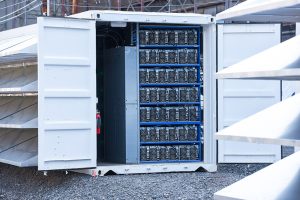Next-Generation Infrastructure Platforms for AI/HPC and Digital Assets
NASDAQ: MIGI
We operate and optimize digital infrastructure to accelerate the global transition to the new digital economy.
Carbon-Free Advanced Digital Infrastructure
Headquartered in Pennsylvania, USA
Our innovation, technology, and operational expertise enables us to operate and optimize digital infrastructure to accelerate the digital economy including the growth of digital assets, artificial intelligence, and other high-performance computing solutions using a carbon-free energy approach.

Carbon-Free Advanced Digital Infrastructure

Headquartered in Pennsylvania, USA
Our innovation, technology, and operational expertise enables us to operate and optimize digital infrastructure to accelerate the digital economy including the growth of digital assets, artificial intelligence, and other high-performance computing solutions using a carbon-free energy approach.
What We Do

Mawson is a leading provider of next-generation digital infrastructure, offering a diverse range of solutions across multiple high-growth sectors including Artificial Intelligence (AI) and High-Performance Computing (HPC), Digital Assets and Cryptocurrency Mining, and Blockchain Network Applications. Read More >>

Mawson is at the forefront of providing next-generation digital infrastructure for Artificial Intelligence (AI) and High-Performance Computing (HPC) applications. We understand that providing infrastructure for GPUs running AI and HPC workloads is fundamentally different from traditional data center operations or cryptocurrency mining. Our experience across multiple digital infrastructure domains gives us a unique advantage in providing tailored solutions for AI and HPC applications. Read More >>

We provide state-of-the-art comprehensive colocation services for digital asset mining operations, offering a robust infrastructure designed for performance and efficiency. Read More >>

Mawson owns and operates state-of-the-art Bitcoin mining facilities and infrastructure. We combine our strategic and operational expertise in digital assets to maximize efficiency and profitability. Read more >>

Mawson is a leading provider of next-generation digital infrastructure, offering a diverse range of solutions across multiple high-growth sectors including Artificial Intelligence (AI) and High-Performance Computing (HPC), Digital Assets and Cryptocurrency Mining, and Blockchain Network Applications.

Mawson is at the forefront of providing next-generation digital infrastructure for Artificial Intelligence (AI) and High-Performance Computing (HPC) applications. We understand that providing infrastructure for GPUs running AI and HPC workloads is fundamentally different from traditional data center operations or cryptocurrency mining. Our experience across multiple digital infrastructure domains gives us a unique advantage in providing tailored solutions for AI and HPC applications.

We provide state-of-the-art comprehensive colocation services for digital asset mining operations, offering a robust infrastructure designed for performance and efficiency.

Mawson owns and operates state-of-the-art Bitcoin mining facilities and infrastructure. We combine our strategic and operational expertise in digital assets to maximize efficiency and profitability.

